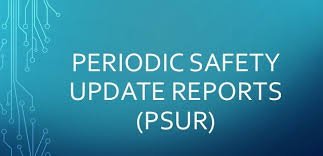Guideline on good pharmacovigilance practices (GVP): Module VII – Periodic safety update report

✅ GVP Module VII – Periodic Safety Update Report (PSUR)
📘 Purpose
GVP Module VII provides guidance on the preparation, submission, and assessment of Periodic Safety Update Reports (PSURs) by Marketing Authorization Holders (MAHs).
It ensures the continuous benefit-risk evaluation of a medicinal product throughout its lifecycle.
🔹 What is a PSUR?
A Periodic Safety Update Report is a pharmacovigilance document intended to:
-
Provide an update on the worldwide safety experience of a product.
-
Evaluate the risk-benefit balance.
-
Include new safety information and signal evaluation.
-
Recommend safety-related changes (if needed).
🔹 Objectives of PSURs
-
Describe the product’s safety profile over a defined period.
-
Assess new or changing risks.
-
Identify whether further risk minimization is required.
-
Ensure proactive signal detection and management.
🔹 Scope
Applies to:
-
Centrally and nationally authorised medicinal products in the EU.
-
Both generic and innovator products (though reporting requirements vary).
🔹 PSUR Contents (ICH E2C(R2) Structure)
-
Introduction
-
Worldwide Marketing Authorization Status
-
Actions Taken for Safety Reasons
-
Changes to Reference Safety Information
-
Estimated Patient Exposure
-
Data in Summary Tabulations
-
Summaries of Significant Findings
-
Signal and Risk Evaluation
-
Benefit Evaluation
-
Integrated Benefit-Risk Analysis
-
Conclusions and Actions
-
Appendices (e.g., line listings)
🔹 Submission Frequency
-
Based on EU PSUR submission schedule (EURD list).
-
Usually:
-
First 2 years: every 6 months
-
Next 2–3 years: annually
-
Thereafter: every 3–5 years unless otherwise required
-
🔹 Assessment Process
-
PSURs are submitted to EMA (via PSUR Repository) or NCAs.
-
EMA/NCA assesses the benefit-risk balance and may recommend:
-
Labelling changes
-
Additional studies
-
Risk minimization activities
-
🔹 PSUR Repository (EU)
-
A central platform for submission and review of PSURs in the EU.
-
Mandatory for centrally authorised products; voluntary for others.
🔹 Quality and Compliance
-
PSURs must be complete, scientifically robust, and timely.
-
MAHs should have SOPs and trained staff for PSUR preparation.
-
Late or non-submission is a regulatory non-compliance.
🔹 Conclusion
PSURs are key tools in proactive pharmacovigilance.
They help regulators and MAHs ensure that the product’s benefit-risk profile remains favourable, enabling safe use in real-world settings.
🎓 Discover one of the best Pharmaceutical Pharmacovigilance course available — click below to explore the course that’s shaping future Pharmacovigilance skills.

